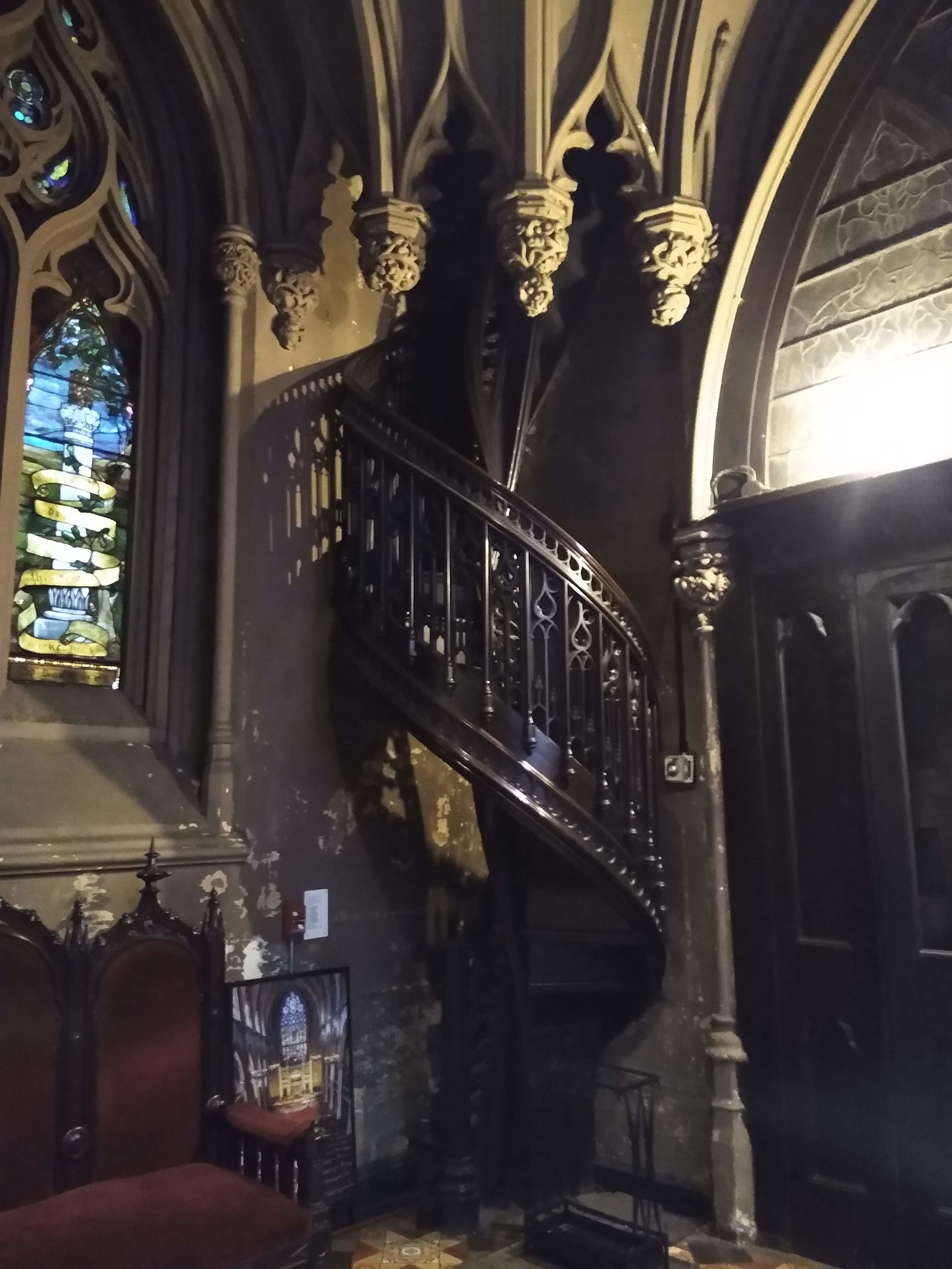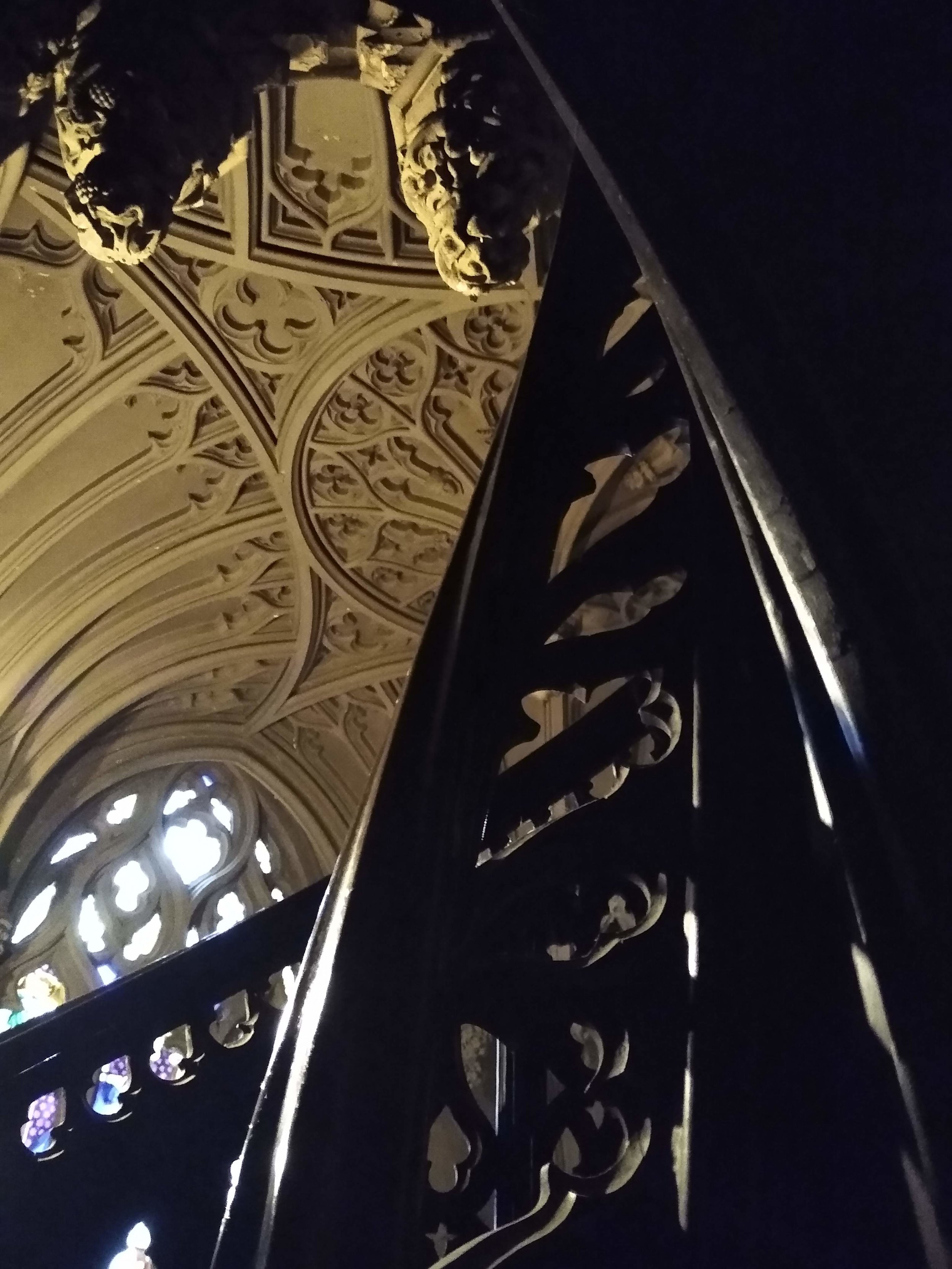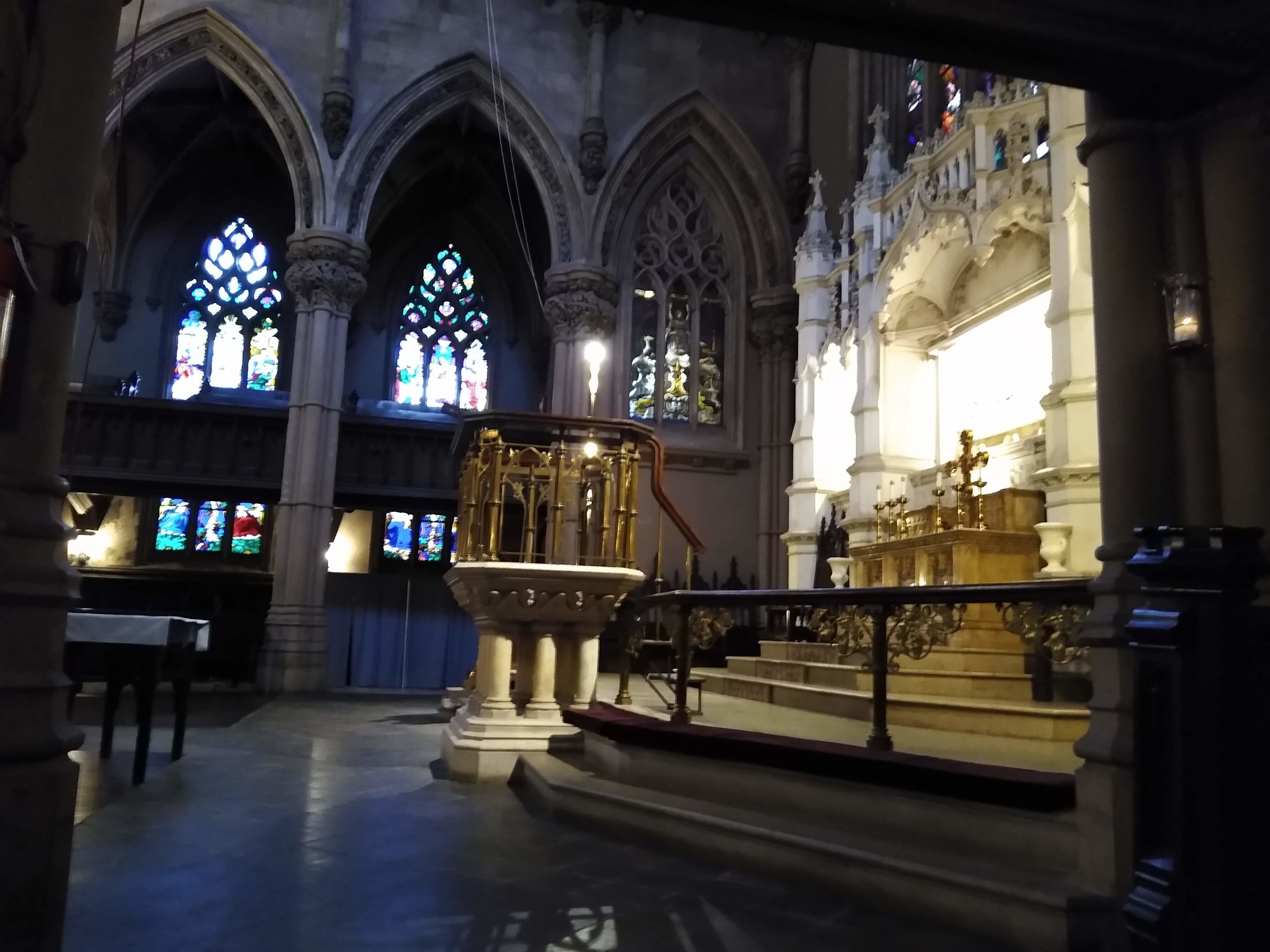"the story is not over, not at all..." • Kelly Tanner
/St Ann & the Holy Trinity Church
August 14th • Brooklyn Heights
There are over 2,000 churches in NYC, with some of the oldest exquisite architecture in the city and some of the most prime real estate not turned into high rises in a constantly changing skyline. Churches are religious dwellings, but in NYC, they are often the places in this city that can hold gatherings, events, cultural happenings and sanctuary for migrants fearing deportation. St. Ann & the Holy Trinity Church is an Episcopal house of worship and community commons in Brooklyn Heights. In their own words- all are welcome to seek sanctuary and solace, follow a spiritual path, celebrate music and the arts, participate in civic discourse, and engage in service for the common good. Fresh off the heels of a 10-week extended run of Theater of War’s Antigone in Ferguson, a free production with a professional rotating cast and full chorus that brought thousands to the church this summer for performance and civic dialogue, St Ann’s continues to be an icon of a Brooklyn common house- a place where people come to engage.
Kelly Tanner was one of our first applicants, applying to work on a memoir about growing up Catholic. We asked her if she would want to do her residency in a church- if it would be helpful or triggering. After her emphatic yes, we thought, easy. We have 2,000 to pick from and most should have open doors. But some churches, especially traditional houses of worship, interpret openness differently. St Ann and the Holy Trinity Church has a small congregation of church goers but a huge community of people who engage with the space for the social and artistic events that bring people to the gorgeous Gothic Cathedral, built in at the end of the 19th century. Their event and space use manager Lauren met us the prior week to show us around and made sure Kelly had everything she needed for her micro-residency to feel comfortable and welcome. Father John also made himself available for questions and connection. Here are Kelly’s reflections:
The residency at St. Ann & the Holy Trinity Church was extraordinary. I have spent many hours of my life in churches, for celebrations, Mass, funerals, or just to seek out the good art, but never have I had the experience of having a space like that all to myself in order to create. Father John and the staff at St. Ann's were kind and welcoming. I had an hour and a half to myself to skulk around the space, take some photos, and find myself a corner to work. Then I started revision on a story I have been working on for the last several months. I spent some time with scissors, cutting the piece up to find the various moments and ideas, and started looking at what I had. Revision, for me, is all about trying to understand - what is this thing I have written? What is it trying to be?
When I started the story, I thought it was a memoir piece about my complicated relationship to the church during my childhood (Catholic, though St. Ann is Episcopal.) However, wandering in the space that was so grand and yet so intimate and peaceful, I started making lists of moments I remembered, and new chapters not yet written, and I realized - the story is not over, not at all. Oh, heavens, might it be a book? Shhhh, I never said that; I'll never admit to it. But it is taking on more than I initially thought it would be, and far more interesting and nuanced than I had originally envisioned.
St. Ann's church is a beautiful, large cathedral, well suited to thinking some pretty big ideas about the world and our connection to it, and our human efforts to frame our understanding through narrative. The time absolutely flew by, and I came away with a new refuge, a notebook full of ideas, and a healthy start on revision. What fun; what a gift.
Whether or not one is religious, it is fortifying to see a church living out their gospel in the daily engagement of a community and a writer revising her own memories into an understanding of her life and the world.
Find out more about St Ann and the Holy Trinity Church and how and when to visit here.
Read some of Kelly’s writing here.
Afterthoughts:
There’s always a story behind a space. St Ann & the Holy Trinity Church has quite a history. In the 40s and 50s, the Reverend William Howard Melish was seen as a provocateur for supporting the National Council for American-Soviet Friendship, which was on Senator Joseph R. McCarthy's list of Communist organizations, and being associated with prominent Black Americans, W. E. B. DuBois and Paul Robeson. Some parishioners thought he was mixing church and politics, while others thought he was supporting the Judeo-Christian ideals of human rights and the right for dissenting opinion. After a bitter feud within the parishioners for 10 years, Rev Melish was ousted and the church was shuttered for 12 years. While the practice of maintaining friendly relations with the Soviet Union and being associated with black artists do not seem as radical now, especially in Brooklyn, at the time the divide was extreme, and communism was seen as a significant threat. Presently, our country is bitterly divided over immigration and the changing face of America being less white and less male-dominated. Churches have become some of the only places where providing sanctuary is protected, even from ICE agents. People have always used religion to pit against and come together. Spaces that preach openness but do not make you everyone feel welcome are unfortunately more common than not, but when a church fulfills the tenets of its doctrine, where people are encouraged to seek sanctuary and solace and engage in service for the common good, regardless of one’s religion or absence of religion, the ripples are felt throughout a community.
Recently Antigone in Ferguson, that played at St Ann’s for much of the spring and summer, was a successful and deeply moving example of following one’s moral convictions and taking action instead of making a martyr or a saint out of someone once they are already gone. We’re not far from the Red Scare of the 40s, where the fire of fear was set ablaze to divide and alienate one’s own neighbors against each other. In fact, history is happening now, and may look even worse in hindsight. As Kelly Tanner remarked, our memories and relationships with even painful things are complicated, and one thing doesn’t represent all the rest. The story is not over, not at all.






